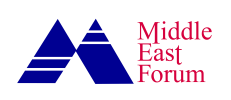A massive April 26, 2025, explosion at Shahid Rajaee Port, Iran’s largest commercial port, that left hundreds injured and dozens dead, could disrupt the country’s foreign trade in addition to highlighting the government’s ineptitude.
Pir Hossein Kolivand, head of Iran’s Red Crescent Society, stated that following the explosion in Bandar Abbas, 40 people died and 190 others remain hospitalized. This catastrophe is not the first for which the regime is directly responsible. In 2020, two air defense missiles brought down a Ukrainian airliner taking off from Tehran, killing 176 people on board. To date, authorities have not offered a clear explanation or prosecuted any high-ranking officials.
Shahid Rajaee Port accounts for 42 percent of Iran’s non-oil trade in volume and 28 percent in value.
The explosion occurred in one of the container terminals, the private lot of Sina Holding, affiliated with the Bonyad-e Mostazafan [Foundation of the Oppressed].
The explosion occurred in one of the container terminals, the private lot of Sina Holding, affiliated with the Bonyad-e Mostazafan [Foundation of the Oppressed], which Supreme Leader Ali Khamenei’s office controls. It is unclear what explosive material was stored in Sina Holding’s dedicated area. However, Western media reported that two Iranian-flagged ships, Golban and Jeyran, carrying over 2,000 tons of sodium perchlorate from China had docked at this port.
The Ports and Maritime Organization of Iran has not recorded the import of this chemical—used in the production of solid rocket fuel—in its official statistics. This suggests that the cargo may have been transferred directly, without customs oversight, to the area mentioned, which the Islamic Revolutionary Guard Corps, or Bonyad-e Mostazafan, apparently controls.
Some Iranian officials have denied any connection between the explosion and materials used in defense industries, but they have provided no alternate explanation as to how a massive explosion could occur in the dedicated area of a major food export company.
The United States previously sanctioned several core companies within this holding, including Sina Financial and Investment Company, Sina Energy Gostar Company, and Sina Bank, due to their links to the Bonyad-e Mostazafan. However, the U.S. government officially attributed these sanctions to human rights violations and use of deadly force against peaceful protesters.
Military institutions, especially those affiliated with the Supreme Leader’s office, have a long history of using civilian infrastructures for military purposes.
That said, the Foundation, whose leadership largely consists of senior Revolutionary Guards members, is also connected to Iran’s nuclear and military activities. For example, in February 2025, former Defense Minister Hossein Dehghan, then head of the Bonyad-e Mostazafan, signed a cooperation agreement with Iran’s Atomic Energy Organization to “utilize mutual capacities in advanced technologies.” Moreover, military institutions, especially those affiliated with the Supreme Leader’s office, have a long history of using civilian infrastructures for military purposes.
Both the United States and the European Union have imposed sanctions on Iranian airlines for transporting weapons, missiles, and drones to the Islamic Republic’s proxy groups in the Middle East—and even to Russia—under the guise of civilian aviation.
Despite Shahid Rajaee Port handling about 1.5 million containers annually—accounting for 85 percent of Iran’s container trade—the share of chemicals, even including petrochemical products like fertilizers, in Iran’s total non-oil exports is less than 20 percent. Chemical fertilizers themselves can be flammable under certain conditions, but none of Sina Holding’s subsidiaries produce or export chemical fertilizers that would necessitate storage in their private port facilities.
Furthermore, data from the Ports and Maritime Organization and Iran’s Chamber of Commerce indicate that the types of chemical and petroleum products typically loaded or unloaded at this port do not have the explosive power needed to cause such widespread devastation—including the destruction of a large part of the 2,400-hectare complex, the obliteration of administrative buildings, and the collapse of container terminals. For example, the port’s primary petroleum export is bitumen, the top petrochemical export is polyethylene, and metals dominate overall exports. On the import side, automobile parts, machinery, and similar goods top the list.
Some Iranian officials have attributed the incident to the improper storage of hazardous materials at the port; however, they have not specified what these materials were.
The explosion will negatively impact the outlook for foreign goods transit through Iran.
The port’s nominal annual loading and unloading capacity is 165 million tons, but last year, only 80 million tons of cargo were processed, highlighting serious logistical inefficiencies. According to World Bank’s assessment, Iran ranks the worst in the region for the logistics performance index (LPI)—only ahead of Afghanistan. Another critical point is that a significant portion of foreign goods transiting through Iran passes via this port. Although Iranian officials claim that the transit of foreign cargo has resumed, published images reveal extensive damage to the port’s administrative facilities, making it unlikely that full operations will be restored soon.
Thus, the explosion will negatively impact the outlook for foreign goods transit through Iran.
Over the past years, Iran has made unsuccessful attempts to enhance its position as a regional transit hub but managed to transit only 25 million tons of foreign goods last year. In comparison, the far smaller Republic of Azerbaijan—which lacks access to open seas and has no trade relations with one of its neighbors, Armenia—managed to transit 33 million tons of foreign goods over the same period.







